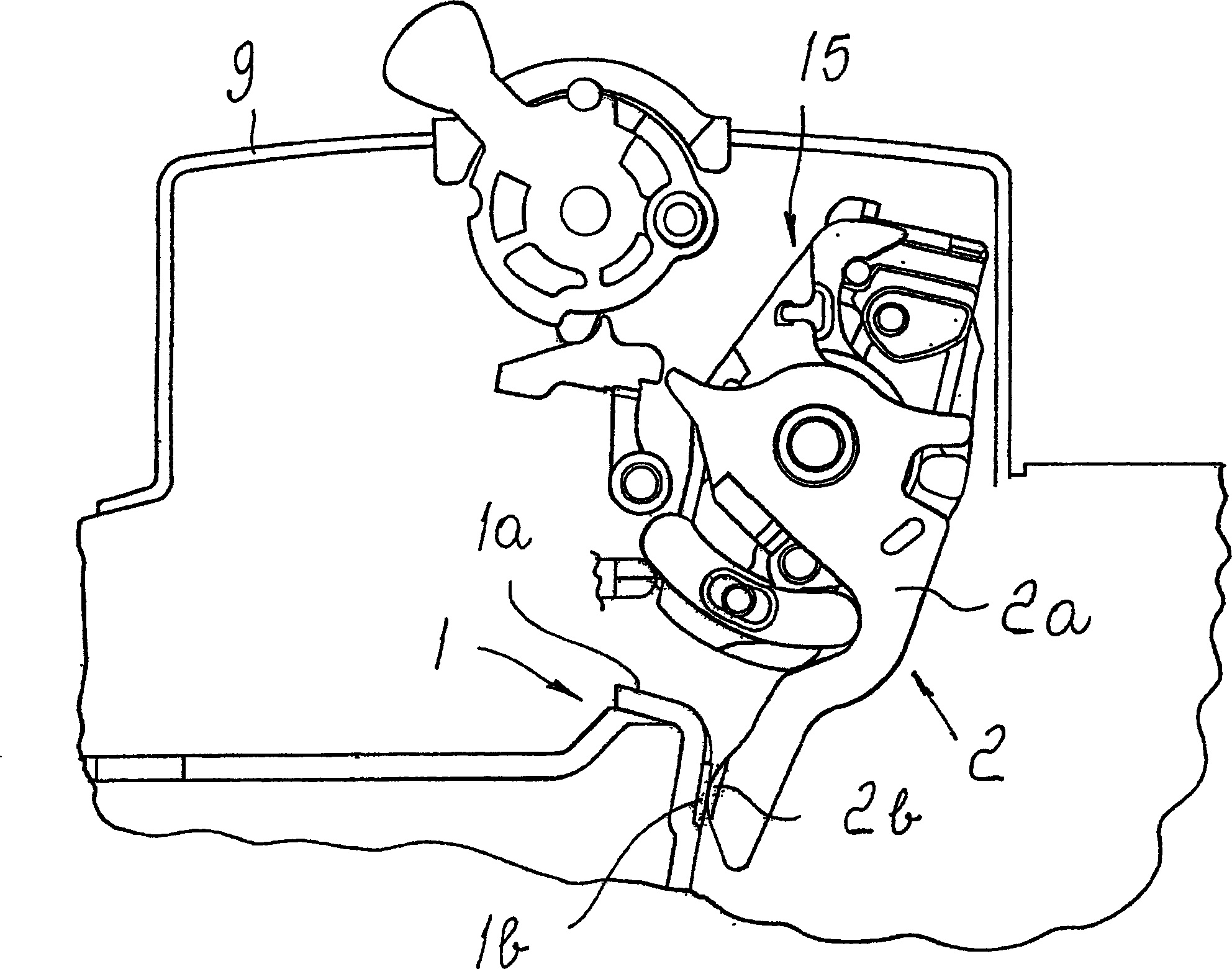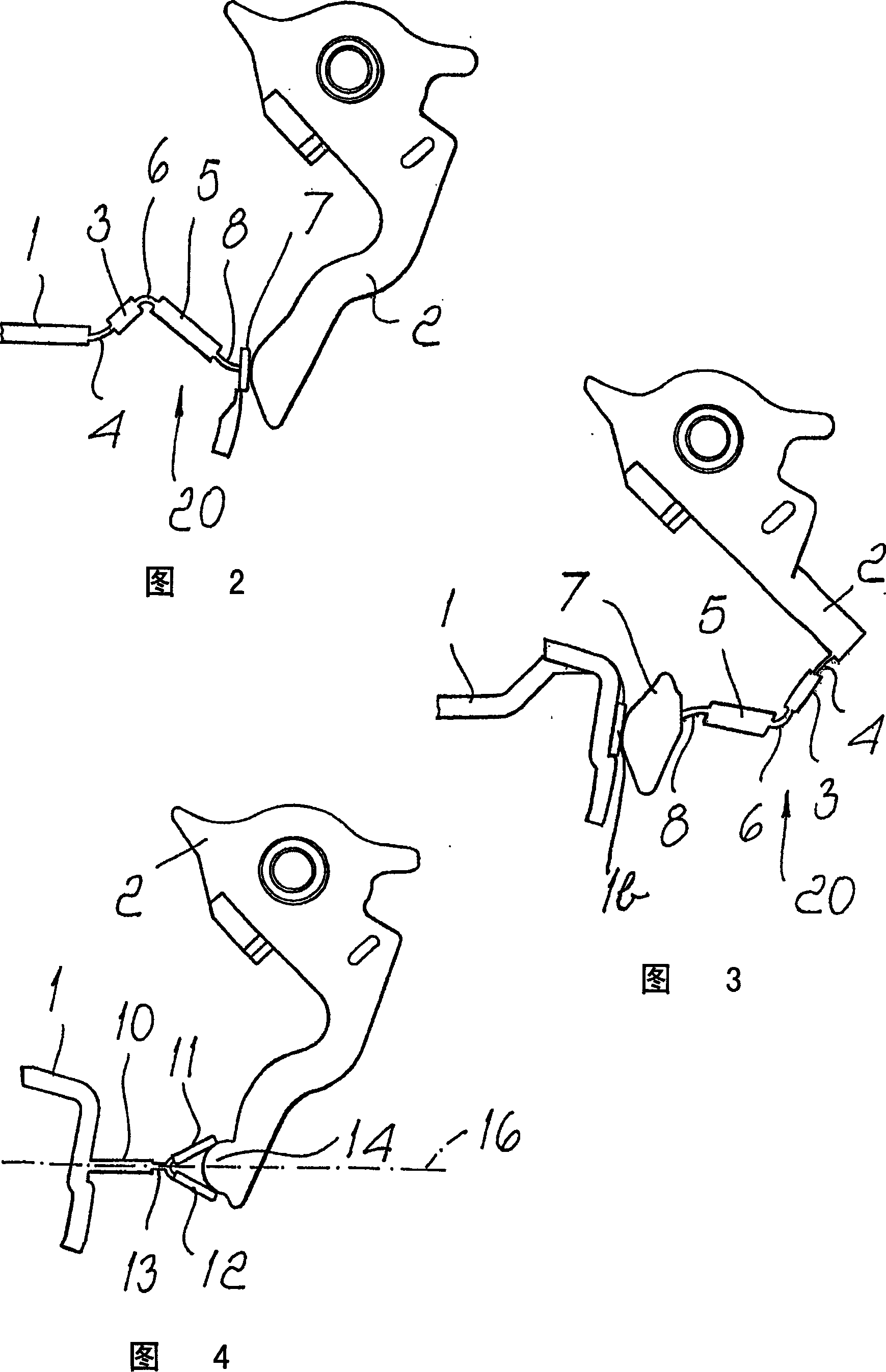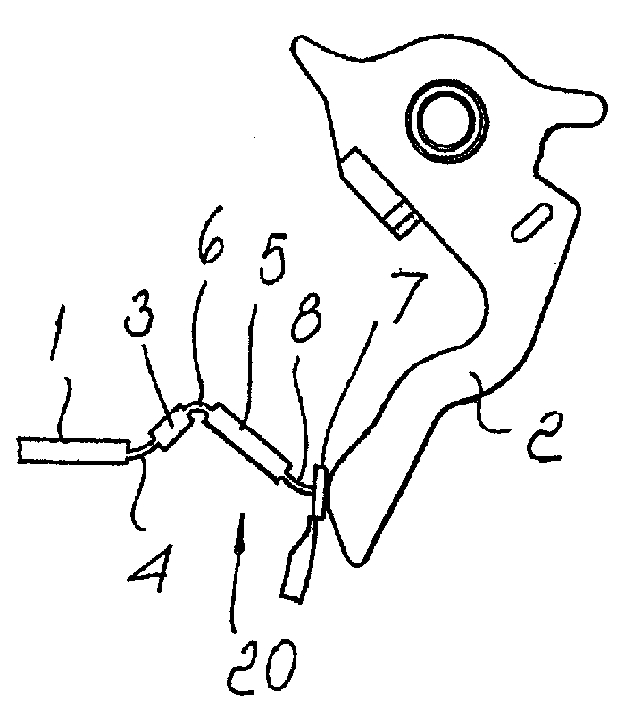Circuit breaker for low-voltage currents
A low-voltage current and circuit breaker technology, which is applied in the field of automatic low-voltage circuit breakers, can solve the problems of reduced electrical performance of circuit breakers, increased production and assembly costs, and contact force that cannot be kept constant.
- Summary
- Abstract
- Description
- Claims
- Application Information
AI Technical Summary
Problems solved by technology
Method used
Image
Examples
Embodiment Construction
[0021] figure 1 Partially shown is a known low voltage current automatic circuit breaker comprising a housing 9 accommodating movable and fixed contact means. In the illustrated embodiment, the fixed contact device includes at least one fixed contact 1 with a conductive body 1a on which a contact plate 1b is mounted; correspondingly, the movable contact device includes a fixed contact 1 with a The movable contact 2 is a contoured conductive body 2a on which is mounted a contact plate 2b suitable for electrical coupling with a corresponding contact plate 1b. Movable contact 2 is driven by a suitable kinematic chain in the figure 1 Indicated by the reference numeral 15, according to an embodiment widely known in the art and therefore not described in detail, the kinematic chain comprises a plurality of movable contacts 2 coupled to the contacts in the disconnected position of the contacts and plates 1b and A lever that moves between closed positions where the plates 2b are in ...
PUM
 Login to View More
Login to View More Abstract
Description
Claims
Application Information
 Login to View More
Login to View More - R&D
- Intellectual Property
- Life Sciences
- Materials
- Tech Scout
- Unparalleled Data Quality
- Higher Quality Content
- 60% Fewer Hallucinations
Browse by: Latest US Patents, China's latest patents, Technical Efficacy Thesaurus, Application Domain, Technology Topic, Popular Technical Reports.
© 2025 PatSnap. All rights reserved.Legal|Privacy policy|Modern Slavery Act Transparency Statement|Sitemap|About US| Contact US: help@patsnap.com



